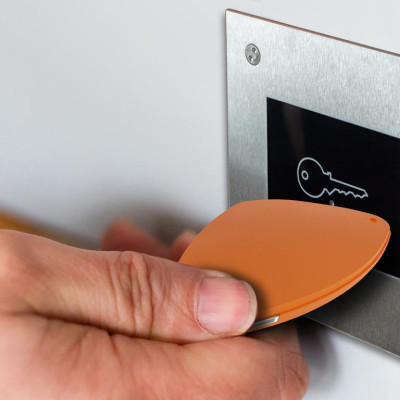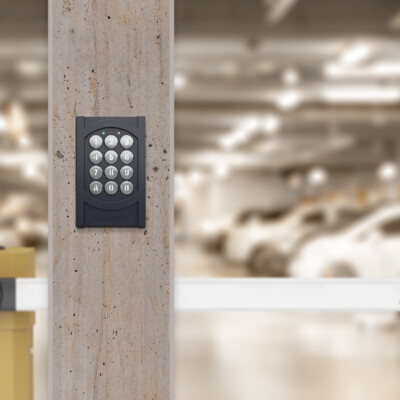The Price is Right: Untangling the Pricing Model of Wireless Access Solutions
October 9, 2024
Property managers know that investing in the right wireless access solutions is critical for successful rental real estate management. While the quest to find the most advantageous options often revolves around features, benefits, and quality, understanding the pricing model is equally essential. This comprehensive guide lets you peek behind the curtain of wireless solution pricing.

Introduction
In the fast-paced world of rental real estate, property managers are constantly seeking innovative solutions that not only enhance security but also provide substantial cost savings. One such solution that has gained popularity in recent years is wireless intercom systems. This blog post will explore the price and cost advantages of wireless intercom solutions compared to traditional wired systems. As a thought leader in the industry, we will share valuable insights, tips, and advice for property managers in large rental real estate. Let’s dive in!
The Unseen Cornerstone: Fundamental Pricing Breakdown
Before a thorough dive into the crux, it’s beneficial to understand how wireless access control solutions are typically priced. Simply put, no single price fits all. Factors like installation charges, hardware components (such as intercoms), number of access points, maintenance costs, and potential subscription fees can contribute to the total cost.
Therefore, understanding how the manufacturers price these elements is pivotal in planning your expenses without stumbling upon hidden costs.
Breaking Down the Bricks: Hardware Cost
One of the first points of costs in implementing wireless access control systems is investing in the right hardware. The hardware typically consists of devices needed for access control – like intercoms, access card readers, or coded keypads.
As these are physical items, their cost can hinge on the manufacturing, materials used, technological sophistication, and even the brand reputation. They tend to be a one-time cost, incurred during the initial setup and installation.
Laying the Foundation: Installation Charges
Installation expenses may be an often-overlooked aspect of pricing but can significantly impact the total price. They typically cover the labor involved in the physical installation of the wireless access control system in your property.
Different companies might price their installation services differently, based on their expertise, installation complexity, number of access points, and geographic location. It is advisable to discuss these costs up front to avoid any unpleasant surprises.
The Maintenance Mechanism: Understanding Support and Maintenance Costs
Once your wireless access control solution is up and running, it will require periodic maintenance checks, software updates, and occasionally, hardware replacements. These costs can vary depending upon the system’s complexity, frequency of maintenance checks, software update policies, and warranty periods for the hardware.
While some companies may offer a comprehensive maintenance contract, others might charge per service visit, so be sure to clarify these details during the negotiation phase.
The Subscription Spectrum: Examining Subscription Fees
Some wireless access control solutions function on a license or subscription-based model, where you pay a periodic fee to use the software that manages and monitors the hardware. These fees can depend on the software’s complexity, the features it offers, and the number of users or access points it supports.
An all-inclusive subscription can often include software updates and technical support, wrapping many potential and sporadic costs into a single, predictable expense.
The Feature Factor: How Add-Ons Influence the Price
The price of your wireless access solution can increase significantly if you choose to include additional features or services. Upgrades, enhanced security features, integration with existing systems, extra intercom connections, and advanced reporting are a few examples that can escalate your costs.
While add-ons can give your property an extra layer of security and convenience, it’s essential to assess whether each additional feature provides value proportionate to its cost.
The Vendor Variance: How Different Providers Price Their Solutions
Each vendor has their unique way of pricing their wireless access solutions. Some bundle their services, offering all-inclusive packages, while others adopt an a la carte approach, allowing you to pay specifically for what you choose to implement.
Comparing multiple vendors helps you understand the market’s pricing standards and ensures you get value for your money. Analyzing various proposals will give you a hot-seat view of the competitive market offering.
Future-Proof Funding: Considering Upgrade and Expansion Costs
Future expansions or upgrades to your wireless access control system can lead to additional expenses. If you anticipate property expansion in the future or want the flexibility to upgrade your system down the line, discuss these possibilities with your vendor and understand how it could affect your costs.
Building a sustainable budgeting blueprint necessitates the inclusion of potential future costs to ensure a seamless transition when the need arises.
Calculating the Cost-Benefit Ratio: Evaluating the Return on Investment
Ultimately, the true price of a wireless access solution isn’t just about the money spent. It’s also about the return on investment. Evaluate how your chosen solution will improve efficiency, enhance security, and save time or money in the long run.
Remember, a well-selected wireless access control system is not an expense but an investment towards streamlined operations and heightened security in your property.




